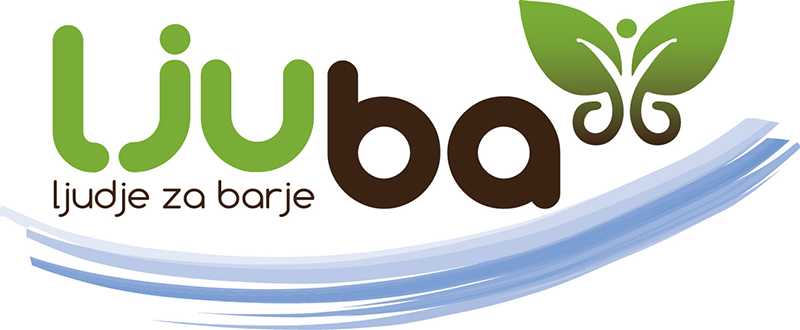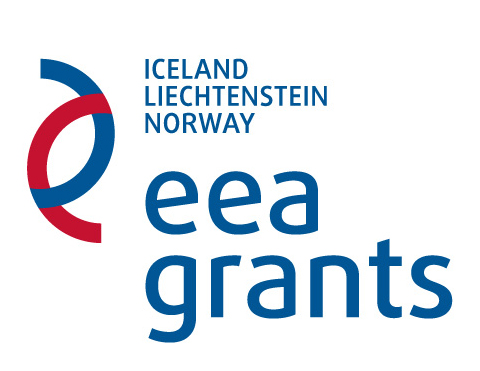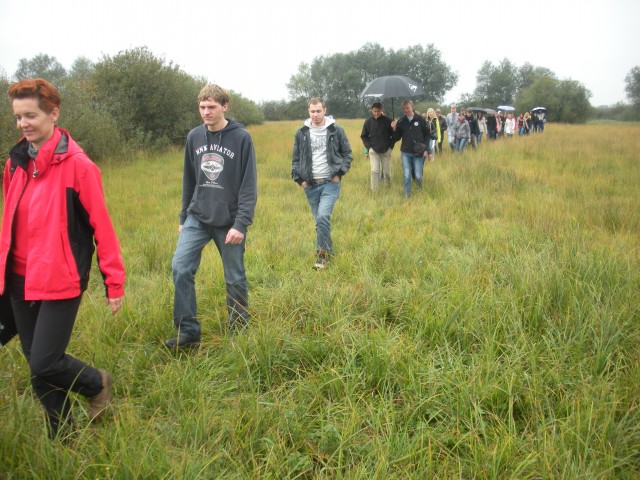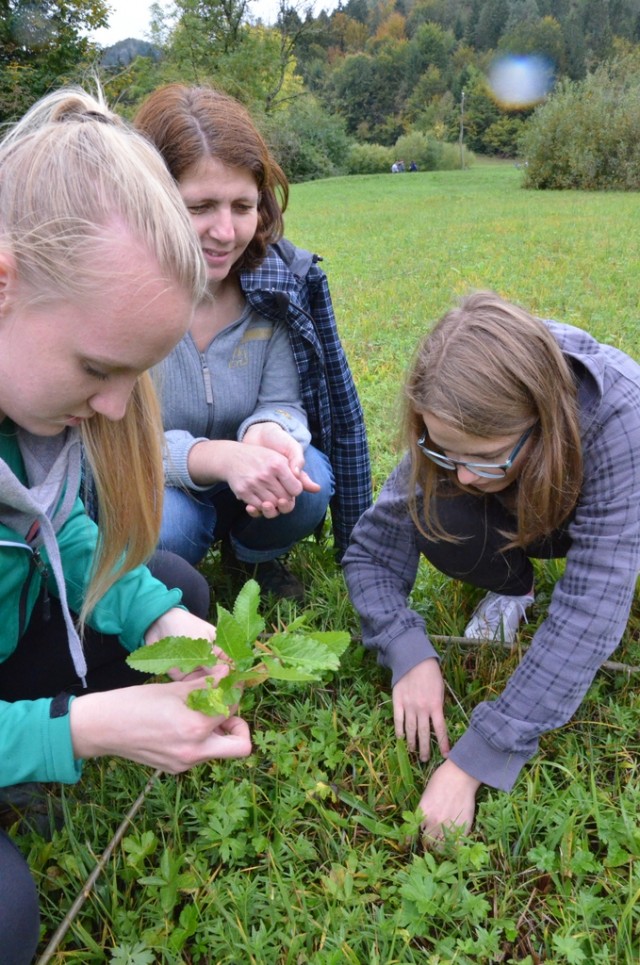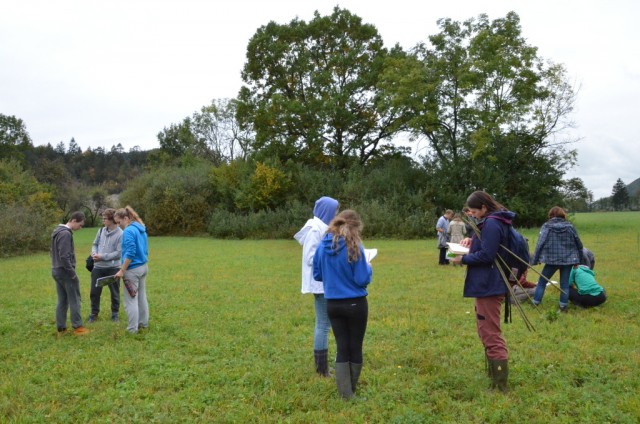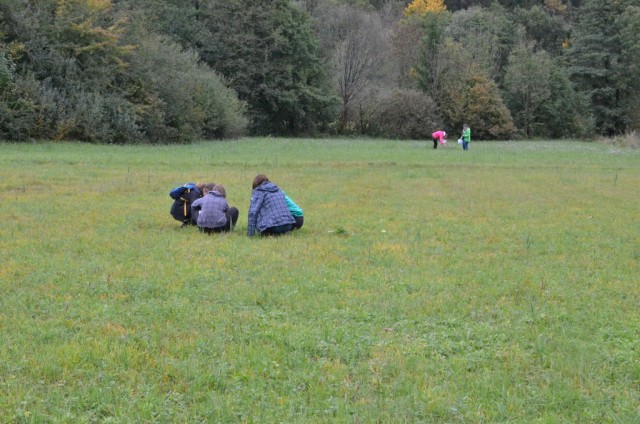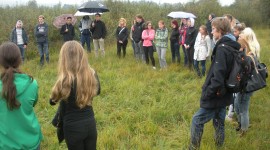
Students get to know the meadows and the ‘People for the Marsh’ project
One of the missions of the ‘People for the Marsh’ project is to pass on knowledge about endangered species and meadow ecosystems to younger generations, so we took students from the Naklo Biotechnical Centre and the Želimlje Gymnasium along the ‘People for the Marsh’ paths and into the field.
On Tuesday, 6th October, we led the first-year students from the Higher Vocational College at the Naklo Biotechnical Centre on an excursion across the Ljubljana Marsh, along the ‘People for the Project’ paths. We gave a presentation of the area and park operations, as well as the main problems and challenges that working in the park entails. Using examples of the European Pond Turtle and the Red-eared Slider, we presented some of the problems faced when introducing non-native species into the natural environment.
Afterwards, in the field, we gave a presentation on the problems of the intrusion of non-native, invasive plant species into the Ljubljana Marsh and specific measures for removing Goldenrod plants. We then explained the importance of preserving late-mown, non-fertilised meadows for preserving endangered plant and animal species, with a special focus on the False Ringlet butterfly, and the measures employed by the ‘People for the Marsh’ project for preserving this butterfly. We also talked about the AEC measures, the collaboration with the Agricultural Advisory Service, and the intensive communication under the ‘People for the Marsh’ project, which is attempting to promote farmer participation in the AEC work, leading to improved conditions for endangered species and their habitats.
Finally, we also headed to the Strajanov Breg wetland valley, where revitalisation of the valley is underway to preserve the last remaining fragment of lowland bog in the Ljubljana Marsh. We highlighted the significance of the valley in terms of nature conservation, explained why the revitalisation of the valley is necessary, how it is being carried out, and what is planned in the future.
Those participants taking part were extremely pleased with the excursion. They discovered new educational subjects, new institutions and new conservation and management approaches in the field of nature preservation. They also expressed an interest for further collaboration, mainly in terms of practical campaigns in the field, e.g. removing non-native species.
On Thursday, 8th October, we conducted field exercises with fourth-year students from the Želimlje Gymnasium, on the subject of meadows and ecosystems. Students first attended an introductory presentation of the ‘People for the Marsh’ project and received brief work instructions. We then headed on foot to the meadows near the school. Once there, students split into groups of four and conducted two practical tasks on pre-prepared survey surface areas – a survey of species and the ecological diversity of meadows and a survey on habitat diversity and invasive non-native plants. Afterwards, they observed the sequential stages of the ecosystem on the overgrown meadow examples. After a whole night of rain, the wetland meadows showed their true wet character; but despite the low cloud layer, which promised fresh rain throughout the day, we managed to conduct the field work without having to use umbrellas and raincoats. Once the field work was finished, we headed back to the classroom, where the students presented the results of their work. They found that the composition of species in the meadows varied according to the wetness and amount of mowing. They also found five invasive, non-native species in the surveyed area. We concluded the exercise with a discussion. Twenty-four students participated in the field exercise, and they mostly considered that this method of teaching – and the event itself – was a positive experience, while some wished for more similar field work.
